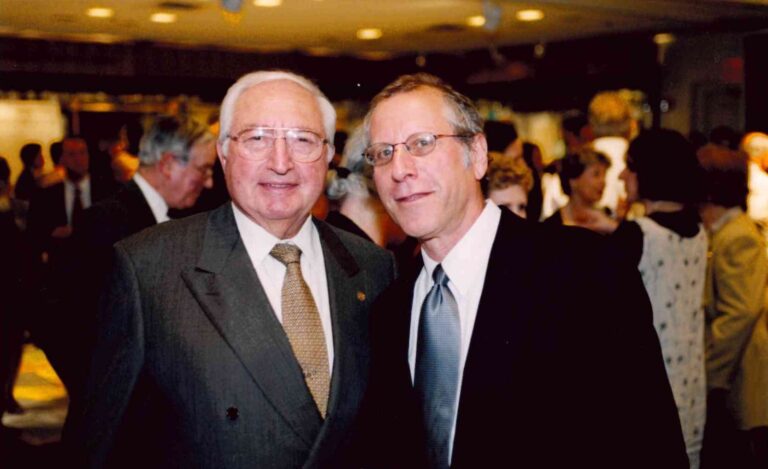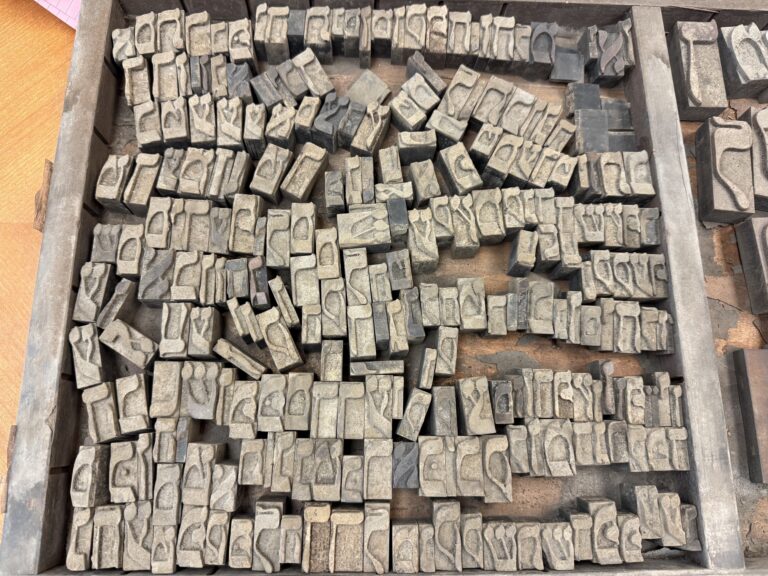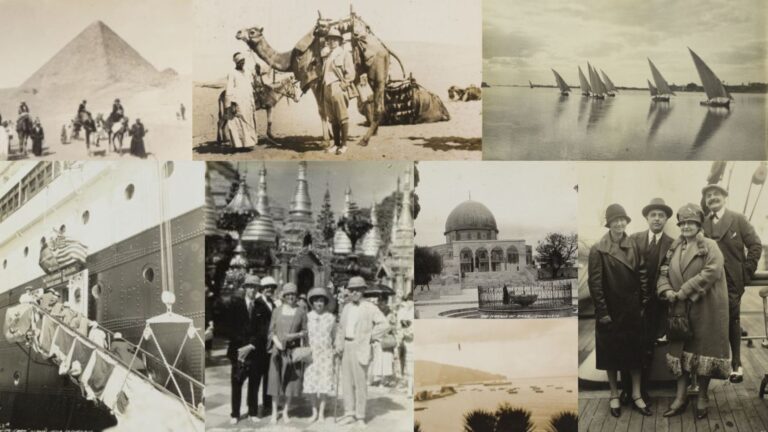New York City’s nightlife is illustrious. From fine dining spaces such as Delmonico’s, Lutece, or the Russian Tea Room to big bands, jazz, and salsa in ballrooms named Roseland or the Copacabana. NYC elicits thoughts of designer gowns, skimpy hippie clothes, and zoot suits. Of course, there’s an underside to the nightlife, too, but all in all, New York City’s entertainment spaces have served not only those thirsting to party all night long, but those who also sought community meeting places, activist planning, union and trade meeting discussions, quinceañeras and bar/bat mitzvahs. The Melvin “Mel” Stier Ballroom and Nightclub Business Records, I-615 documents the incredible life of three iconic New York City Ballrooms, the Audubon, Palm Gardens, and Hunts Point Palace.
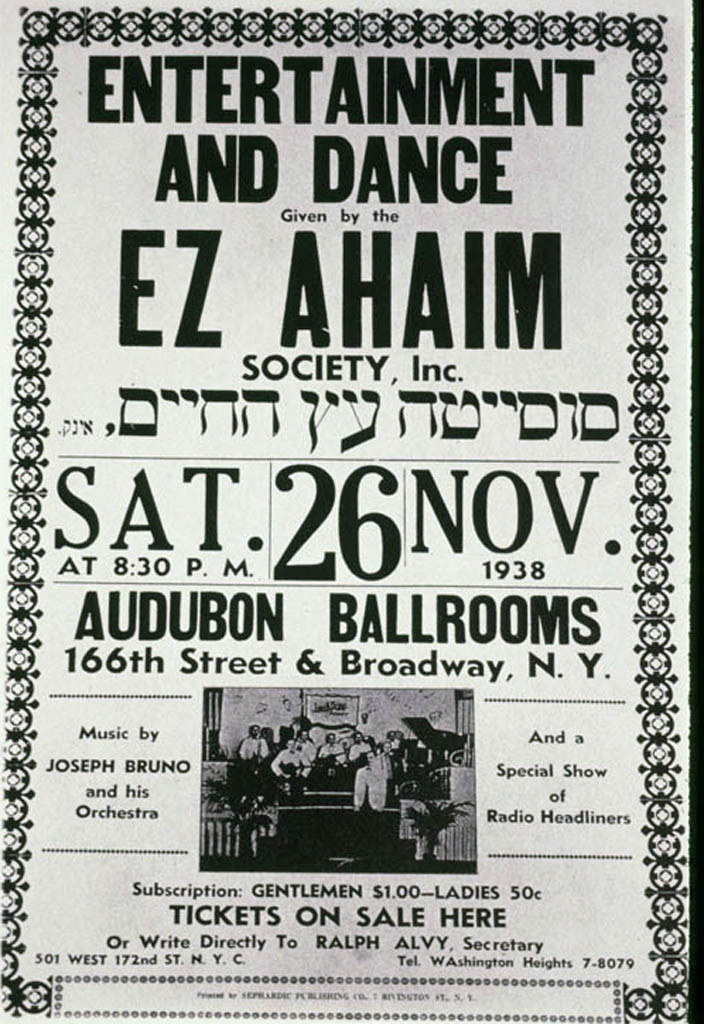
Information on Mel Stier, nightclub and ballroom owner/manager is limited. What could be found is that Stier worked in the ballroom and nightclub business from the earliest known date of 1950. Stier is connected to several New York City area ballrooms and nightclubs: the Audubon Ballroom and Theatre (3940 Broadway, also known as the San Juan Theater after the ballroom went bankrupt and was seized by New York City in 1967); the Adam’s Apple Nightclub located at 61st street and 1st Avenue in Manhattan; the Palm Gardens Ballroom (later renamed The Cheetah) located at 306 W. 52nd Street in midtown Manhattan; and the Hunts Point Palace in the Bronx, a predominately salsa-oriented club which, according to A South Bronx Latin Music Tale, Stier bought in 1950.
The Audubon Ballroom is the most famous and infamous of the mentioned nightclubs, primarily known today as the venue in which civil rights activist Malcolm X, was assassinated on February 21, 1965. After breaking from the Nation of Islam, Malcolm X founded the Organization of Afro-American Unity (OAAU) which met weekly at the ballroom. While no information on the assassination of Malcolm X appears in the collection, his murder catapulted the venue into a symbol of the 1960s Civil Rights Movement.
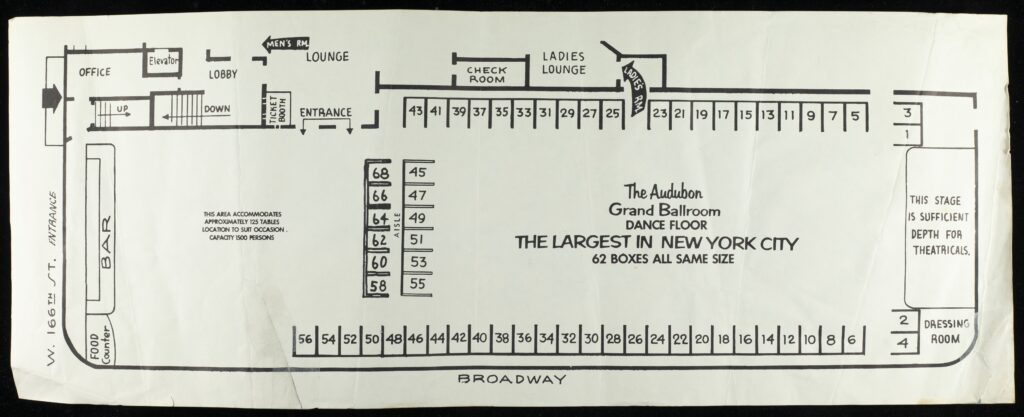
The Audubon’s history begins in 1912 when the entertainment complex was commissioned by film producer and founder of the 20th Century Fox Film Corporation, William Fox. Fox hired architect Thomas W. Lamb to design the complex, which contained a 2500-seat theatre and a ballroom with “62 booths” on the second floor with a seating capacity of 200 guests. Over the decades of its existence (1912-1980) it was also known as the William Fox Audubon, the Beverly Hills, and the San Juan Theatre. According to the New York Preservation Archive Project (NYPA) the architecture of the Audubon was grand: “Thomas W. Lamb designed the Audubon Ballroom with a hybrid of mythical and anthropomorphic imagery that heightened its sense of theatricality. The exterior features a three-dimensional polychrome terracotta sculpture of a boat. A personified sculpture of Neptune crowns the front of the ship with a maiden hovering below amidst the tumultuous waves.” Though Malcolm X’s death catapulted the Audubon into the history books, the venue also served as a movie house and ballroom, African and Latino American community center, Jewish synagogue congregation location, and labor union meetinghouse.
In 1967, New York City seized the Audubon Ballroom from its owners due to tax issues. The club continued to exist as the San Juan Theatre, primarily as a Latino movie playhouse. By 1980, the Audubon was completely closed to the public and in the crosshairs of New York City and Columbia University for razing as a site for a medical research unit. After an uproar by the Harlem community, an agreement was forged to partially preserve the ballroom façade and include it in a neighborhood plan to create both a Columbia research facility and a neighborhood community center. The NYPA writes that: “The complex now serves as the Audubon Business and Technology Center. The university restored the Broadway portion of the façade, which contains the three-dimensional sculpture of Neptune. The interior of the lobby contains a portion of the ballroom where Malcolm X was assassinated, which was protected and restored. In 2005, the Malcolm X and Dr. Betty Shabazz Memorial and Educational Center opened in the lobby of the Audubon Hall in order to commemorate the contributions Malcolm X made to the civil rights movement.”
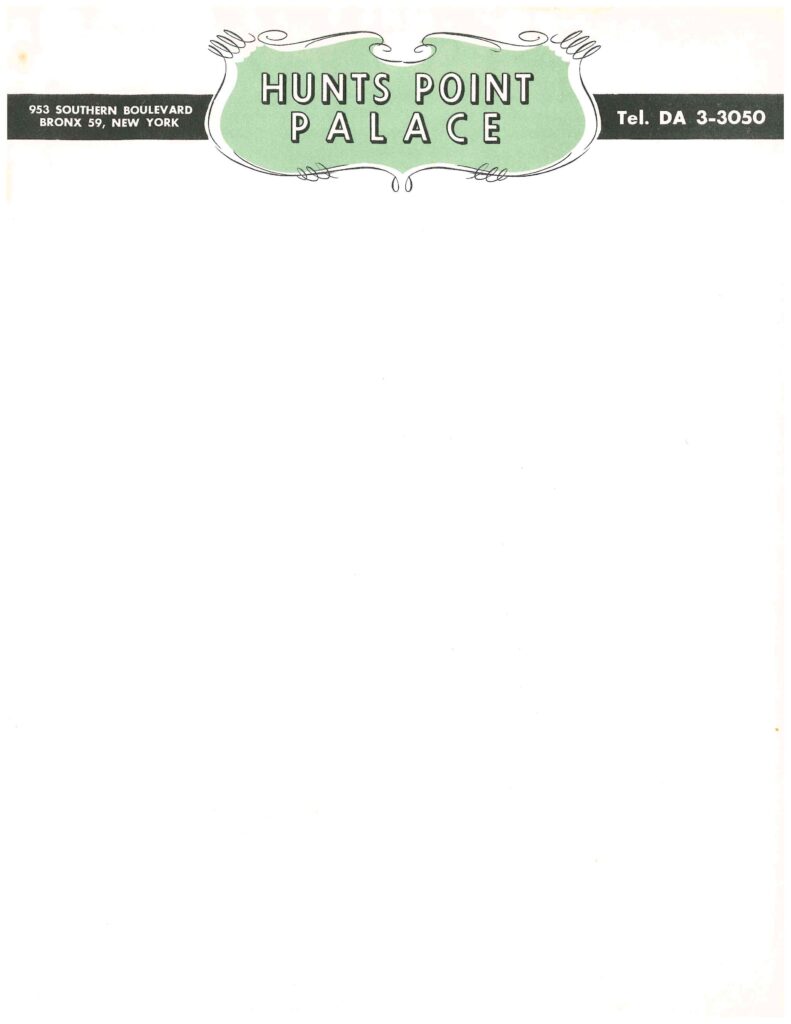
The Hunts Point Palace (also known as the Tribune and the Alhambra) was in the heart of a Jewish, Italian, and Irish community in Hunts Point, the Bronx. According to A South Bronx Latin Music Tale, Hunts Point Palace also shows a connection between Jews and the Latino Salsa and Mambo communities. The book outlines how it was first built by the Morgenthau family in 1911 and later purchased by Mel Stier in 1950. It offered a variety of event spaces such as a small ballroom on the first floor, a larger ballroom with a balcony on the second floor, and a roof garden. For smaller and more intimate events, the fourth floor had rooms for weddings and meetings. Clientele shifted as the community changed from Jewish, Italian, and Irish guests to Puerto Rican. In its later years the venue offered programming with Latino music, “Dancer Emma Rodríguez remembers her grandfather taking her to bailes jíbaros as a child in the 1940s for events such as Three King’s Day. Dancers would dress in jíbaro outfits— white clothing, red scarf, pava (straw hat), and wooden machete—and dance to the traditional Puerto Rican Mountain music. As a teenager Rodriguez later went there to dance to the mambo bands, “That was the Latinos’ dance hall, the Hunts Point Palace. Definitely.”

Hunts Point Palace was part of a large entertainment center and included the Spooner Theatre, named after the first long-term lease holder of the theater, Cecil Spooner, who was soon arrested for her play, House of Bondage, which “provided a stark look at the practice of forcing young women into prostitution…,” according to Untapped Cities: 14 Forgotten Movie Theatres of the Bronx NYC. After Spooner’s lease was terminated, the Loews Corporation ran the venue over the next decades (presumably until Stier bought the complex in 1950) and the complex was a mainstay in the Hunts Points community as a movie house, ballroom, and meeting place. By the late 1970s, the venue was closed, eventually becoming Kelly’s Furniture Store, a Duane Reade, another furniture store, and a children’s clothing store.
The early history of the Palm Gardens Ballroom was a little difficult to find, but funnily enough, most information on this venue is found in the lore of Grateful Dead shows. The Dead played two shows at the Palm on December 23rd and 24th, 1967 with three other bands, Gray Company, Aluminum Dream and a local New York City band, Group Image. Unlike many Grateful Dead shows, there is no recording nor a complete set list of the band’s appearances at the venue.
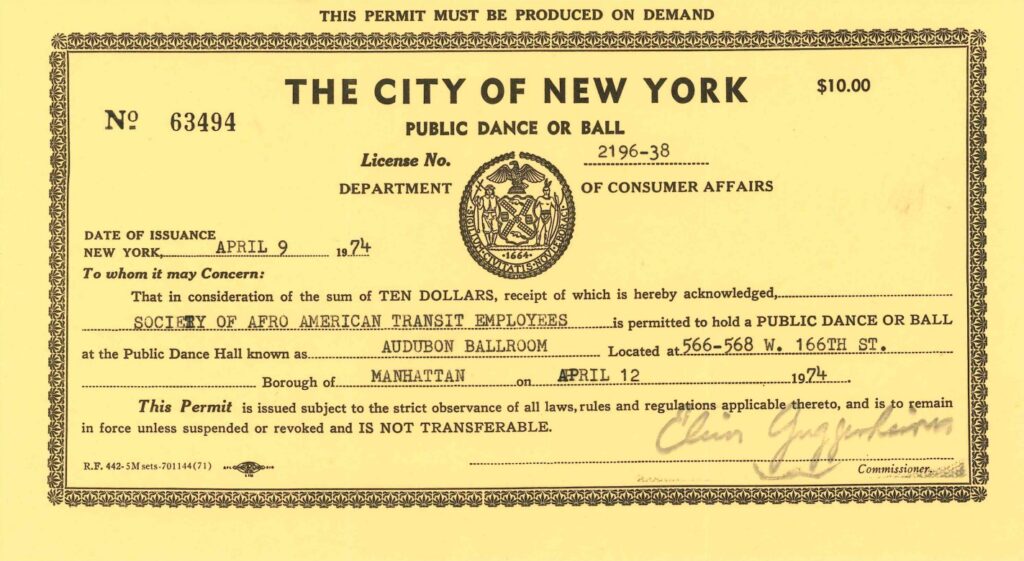
They’re Dancing in Chicago, Down in New Orleans (which documents buildings the Dead played at), cites that Palm Gardens was a dance hall in 1922 named The Palm Garden with an occupancy of 500 on the first-floor ballroom and 200 on the second floor. The venue was known as Palm Gardens beginning about 1936. The blog notes a number of momentous events in the space; the first African American opera on Broadway, Voodoo, opened there in 1928, Fidel Castro spoke to Cuban exiles in 1955, jazz great John Coltrane performed with Thelonious Monk in 1957, and Malcolm X gave speeches there in 1964 and 1965 for the Militant Labor Forum and in 1964 for “The Black Revolution” and “Prospects for Freedom 1965.” The space saw acts such as a 1965 performance art piece Without and Within by Ken Dewey, in which he divided the audience into teams for a game of tug-of-war. The Latin “boogaloo” sored in popularity thanks to the Joe Cuba Sextet’s 1966 song, Bang Bang, which was composed during a once-a-week music show catered for an African American audience.

The Palm Gardens Ballroom was renamed the Cheetah from 1968-1974 when the Cheetah relocated from its prior space at 53rd and Broadway. The Cheetah was known for Latin music and before relocation reviewed as the “city’s first super-sized, sensory-overload, multimedia mega club.” The New York Times credited the venue with introducing Salsa to the American public when the Fania All-Stars held a concert there on August 26th, 1971, as documented in the film, Our Latin Thing. The Palm Gardens Building was occupied by S.I.R. (Studio Instrument Rentals) from 1974 until 2004 when the site was redeveloped into a new condominium tower in 2007.
The Melvin Stier Ballroom and Nightclub collection dates from 1944-1976, the bulk of which is between 1966-1974. The collection includes partial nightclub records of the three New York City ballrooms including City of New York permits granted for union and community meetings, dances, Avon meeting receipts, and parties. A typed and undated list of other ballrooms and nightclubs is included in the collection. Ephemera includes original bingo cards, a hand-drawn and printed layout of the ballroom at the Audubon, Miss Five Boroughs raffle tickets and invitations, and New Riders dance raffle tickets. The collection is useful for historical references to New York City venues, the business and uses of entertainment and community centers during New York City’s “blue laws” era, and a historical snapshot of three of New York City’s lost entertainment venues, particularly from 1966-1976. While there is little information on Mr. Stier himself, he certainly left a legacy of New York City’s life of entertainment and community. However, according to a note found in the collection, working with Mr. Stier was a pleasure.

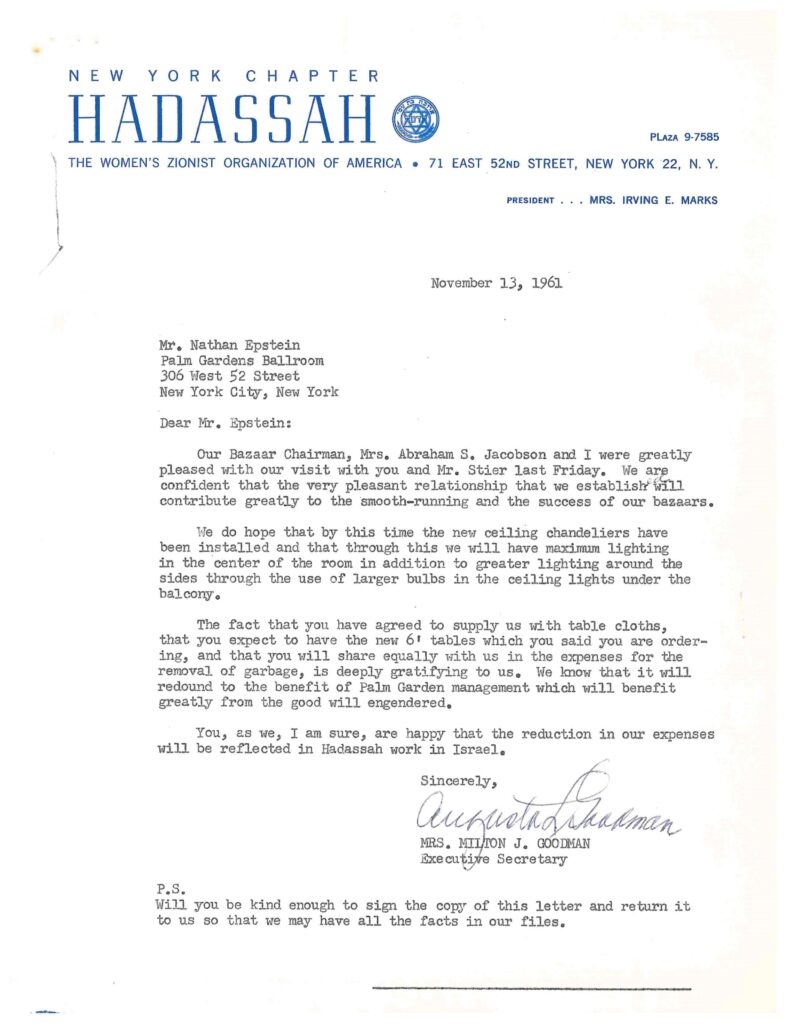
Sources
“52nd Street,” Wikipedia. https://en.wikipedia.org/ wiki/52nd_Street_(Manhattan) Accessed March 27, 2024.
“1967 Ads: The Group Image at the Palm Gardens,” It’s All The Streets You Crossed Not So Long Ago. https://streetsyoucrossed.blogspot.com/2010/06/1967-ads-groupimage-at-palm-gardens.html Accessed March 27, 2024.
CHA CHA with A BACKBEAT”: SONGS AND STORIES of LATIN BOOGALOO. Indiana University Press Jul 31, 1999. https://www.afrolatinoforum.org/cha-cha-with-abackbeat Accessed March 27, 2024.
Flores, Juan, ‘Boogaloo Soul’, Salsa Rising: New York Latin Music of the Sixties Generation (New York, 2016; online edn, Oxford Academic, 24 Mar. 2016), https://doi.org/10.1093/ acprof:oso/9780199764891.003.0004. Accessed 27 Mar. 2024.
Grateful Dead, Palm Gardens, 1967. https://jerrygarcia.com/ show/1967-12-23-palm-gardens-new-york-ny-usa/ Accessed March 27, 2024.
“It Happened One Night at the Cheetah,” New York Times, August 19, 2011. https:// www.nytimes.com/2011/08/21/arts/music/fania-all-stars-return-in-our-latin-thing-dvd.html
MAAP: Mapping the African American Past, Audubon Theatre and Ballroom https://maap.columbia.edu/place/24.html Accessed March 25, 2024.
New York Preservation Archive Project: Audubon Ballroom. https:// www.nypap.org/preservation-history/audubon-ballroom/ Accessed March 22, 2024.
Other Legendary Clubs. https://www.disco-disco.com/clubs/otherclubs.shtml Accessed March 22, 2024.
Shabazz Center. https://theshabazzcenter.org/ Accessed March 25, 2024.
Singer, Roberta L. and Elena Martinez, A South Bronx Latin Music Tale. http://www.herencialatina.com/South_Bronx_Latin/Latin_Music_Bronx.htm – Page 8- Accessed March 21, 2024.
They’re Dancing in Chicago, Down in New Orleans (A History of Venues Played by the Grateful Dead: The Palm Gardens/The Cheetah). https:// gdvenue.blogspot.com/2012/01/palm-garden-310-w-52nd-st-nyc.html Accessed March 25, 2024.
Untapped Cities: 14 Forgotten Movie Theaters of the Bronx, NYC. https:// untappedcities.com/2021/04/14/forgotten-movie-theaters-bronx-nyc/2/ Accessed March 26, 2024.
Untapped Cities: What Happened to NYC’s Audubon Ballroom, The Site of Malcolm X’s Assassination. https://untappedcities.com/2022/02/21/audubonballroom-malcolm-x-assassination/ Accessed March 25, 2024.


